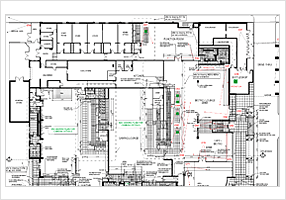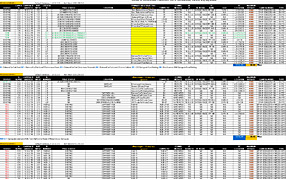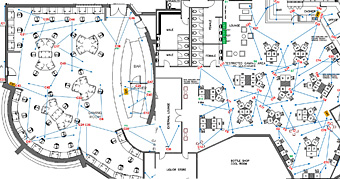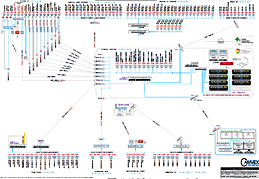CCTV Documentation
A well designed, and "managed" CCTV system requires good documentation. The security industry as a whole doesn't have a good track record with documentation. The reality is either the system is not documented at all, or each Service Technician, or original installer keeps the knowledge about the system in their head, or sometimes on their own smart phone. This usually means when you change providers or a different technician attends your site to service your system, they need to spend time on discovery of how everything is connected and works, and you pay for this each time, and how well it is done very much depends on the skill of the Technician and the time they are willing or able to put into this process. Good CCTV documentation provides more than just where the cameras are located, but what networking devices they are connected to and how much bandwidth each segment is using, how and where cameras being displayed and by whom, what permissions does each User have. Maintenance becomes difficult and inconsistent without good up to date documentation. CCTV documentation should be able to answer the following questions:
Where is each camera located
What area is each camera look at, FoV (Field of View)
Record settings for cameras that are used for specific purposes like Face Recognition, AI perimeter protection, People counting, Plate Capture, Age recognition etc.
What is the model and camera type, and how is it mounted
What IP address of each camera, network switch and Client PC
The encoding settings each camera need to be set to, this is very important because it relates to how much retention (recording history) your system will have, and the network bandwidth (equipment) that each segment requires, and is critical to know when you wish to add more cameras, or higher resolution cameras. What is the impact on the storage and network infrastructure. For certain environments, there are laws regarding recording duration and encoding settings that may impact a venues ability to operate if these regulations are not met.
List of User accounts and what cameras they have permissions for and what CCTV operations they are allowed to perform
Details on how, or if the system is accessed remotely.
Where each network switch is located and what cameras and recorders are connected to each one
What recorder is each camera being recorded on, how much storage does each recorder have, and how many spare inputs does it have
CCTV Site Plans
 These plans record that location and field of view (FoV) of each camera, head-end and other important equipment relating to each segment, like network switches, RF devices, media convertors, Client PCs and POS (Point of Sale) equipment
These plans record that location and field of view (FoV) of each camera, head-end and other important equipment relating to each segment, like network switches, RF devices, media convertors, Client PCs and POS (Point of Sale) equipment
CCTV Schedule
 The "CCTV Schedule" contains a list of all equipment associated with the CCTV system, camera video overlay label descriptions, actual input number of each camera, all IP addressing, User account information, Point of Sale terminal connectivity, video encoding settings, what recording mode the cameras will use, and the types of events and alarms that may be assosicated with the system or cameras.
The "CCTV Schedule" contains a list of all equipment associated with the CCTV system, camera video overlay label descriptions, actual input number of each camera, all IP addressing, User account information, Point of Sale terminal connectivity, video encoding settings, what recording mode the cameras will use, and the types of events and alarms that may be assosicated with the system or cameras.
CCTV Gaming Plans
 There are legal requirements regarding how CCTV cameras are used around Gaming machines and venues serving Liquor. These requirements must be followed for a venue to remain compliant. Gaming Plans show all cameras within the gaming area and the fields of view of the all cameras covering all gaming related operations including gaming entrances, exits, and cashiers. Many new systems also include cameras related to 'Facial Recognition - Self-Exclusion' and other related technologies
There are legal requirements regarding how CCTV cameras are used around Gaming machines and venues serving Liquor. These requirements must be followed for a venue to remain compliant. Gaming Plans show all cameras within the gaming area and the fields of view of the all cameras covering all gaming related operations including gaming entrances, exits, and cashiers. Many new systems also include cameras related to 'Facial Recognition - Self-Exclusion' and other related technologies
CCTV Schematics
 The CCTV Schematic is a logical visual representation of how all the surveillance devices are CONNECTED to each other and the type of cabling used, the type of video monitor output used for each viewing platform. It also displays information on POS interfacing associated with the each NVR.
The CCTV Schematic is a logical visual representation of how all the surveillance devices are CONNECTED to each other and the type of cabling used, the type of video monitor output used for each viewing platform. It also displays information on POS interfacing associated with the each NVR.


